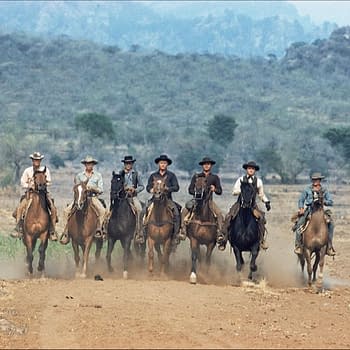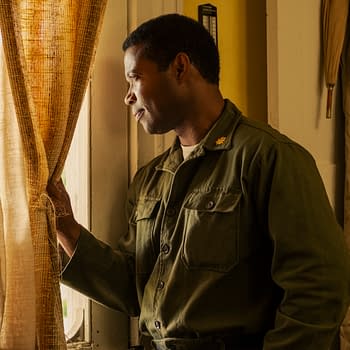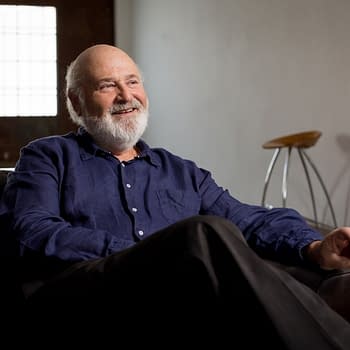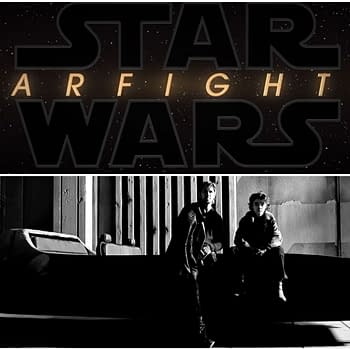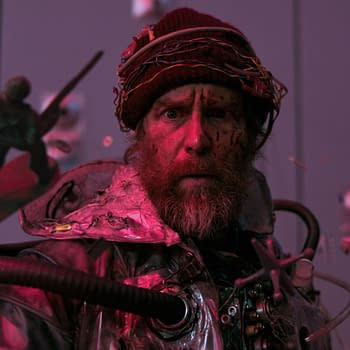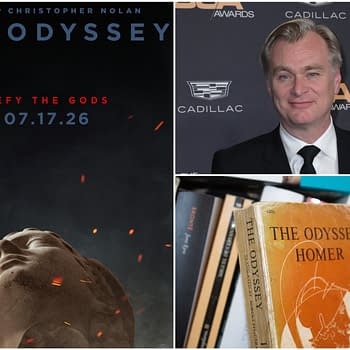Posted in: Exclusive, Horror, Interview, Movies | Tagged: Audrey Grace Marshall, Cory Choy, Esme My Love, exclusive, interview, Stacey Weckstein, Terror Films
Esme, My Love Director Cory Choy Breaks Down Mother-Daughter Thriller
Writer and director Cory Choy talks to Bleeding Cool about the psychological journey of Terror Films' mother-daughter thriller Esme, My Love.
Given his sound background, Cory Choy knows something about immersion and environment. Taking upon that experience along with his time producing, translated to directing his mother-daughter thriller in Terror Films' Esme, My Love, which follows Hannah (Stacey Weckstein), who notices the symptoms of a terminal and painful illness in her aloof daughter, Esme (Audrey Grace Marshall). She decides to take her on a trip to their abandoned family farm in a desperate attempt to connect before they have to say goodbye. Choy spoke to Bleeding Cool about taking elements from a supernatural true story to life on the screen, finding the right righting partner, casting, and filming.
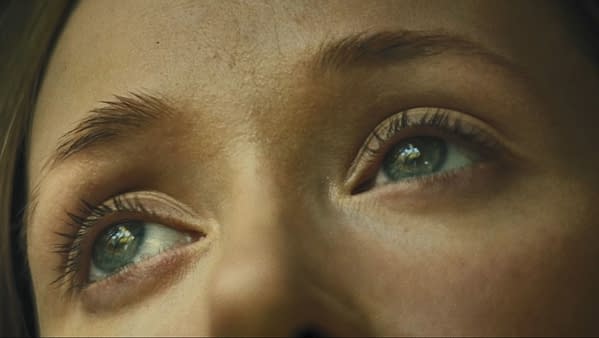
The Real-Life Inspiration Behind 'Esme, My Love'
Bleeding Cool: What inspired 'Esme, My Love?'
Choy: There were two different kernels of inspiration. The first was one of the most haunting things ever told me was a story of a woman. She described this experience that she had with her young daughter. She had an experience with someone she didn't recognize in the house behind her daughter. As she described, this sounded terrifying, and she told me, "No, this is the most amazing thing that ever happened to me because that person was an angel. I've never had anything like that ever happen to me again." I was struck by how it sounded horrifying, but from her perspective, it was one of the most beautiful things that ever happened to her, which stuck with me.
The second part of the kernel 'Esme, My Love' is made because it is based on true events. The DeLarm family is one that had property in Haig, New York, which is on the border of New York and Vermont. We shot the film on the DeLarm family farm and borrowed many of the characters' backstories and stories from members of the family, their history, and lore. For instance, there are three sisters, Sally, Sherry, and Susan DeLarm, and Sally is the town historian. We were up there filming a music video and talked about space and how cool it was. I realized I'd been talking to her for two hours, and she had a great great grandmother or aunt named Hannah.
Hannah was almost kidnapped. There were some visitors in town. They called them gypsies, and when they left, they put Hannah in their wagon. She had bright red hair, and one of the neighbors noticed. "Hey, wait a second. That's got to be the DeLarm girl." They saddled up the horses that got the girl back. When Hannah was back, she had a Saint Christopher's medal in her hand, which is also the one we use in the film. We have some of the real Hannah's personal effects now, but is the character Hannah solely based on that real person? No. Hannah's a short story and an amalgamation of many different things from the DeLarm family history, folklore, and different parts of different people's lives.
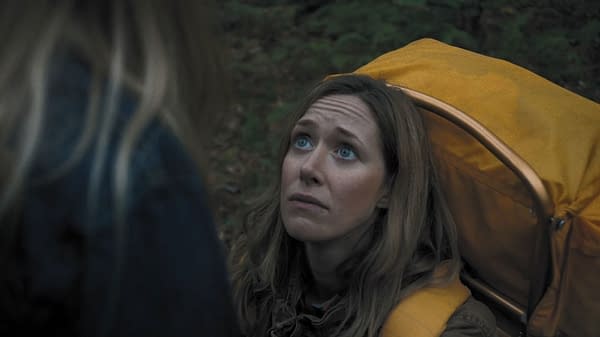
Can you break down the creative process you had with Lauren Allen getting the screenplay together and how it turned out?
I was looking for a writing partner for a long time. I wanted to tell a mother-daughter story, so I needed to work with a woman. If you're going to explore in-depth, the story begins with the relationship between a mother and a daughter. It's important to have someone who is a mother and has a daughter to provide that perspective in there. I tried working with various people and found someone I liked working with. Her name is Lily Johnson. She was like, "We are talking about it. We were reviving; we're getting all this stuff." I said, "I'd like to take you to the space I want to shoot so you can meet Sally and see this place, and we can talk."
[Lily's] like, "I'd love to come. Also, I'd like to bring my friend Laura." I was like, "Cool." We get there, and Lily says, "This project isn't for me. However, Laura would be a good fit for this." I was like, "Hi, Laura, nice to meet you. Do you want to spend some days with Lily and me in this space?" She responded, "I guess. Thanks, Lily." We talked, and Lily was right. One of the things I appreciate most about Laura is that she's a devout Catholic in terms of ethics, morality, and how she lives her life, not to mention she goes to church every Sunday.
While we were out there, it was a Sunday, and she had to find a church to go to. It didn't have to be a Catholic church. But any would do. I'm not super religious; I'm Jewish but non-practicing. I don't go to organized things, but I've always been spiritual, and this movie is very spiritual. Since one of the inciting kernels is the experience that somebody had with an angel, I needed to work with somebody who not only understands the mother-daughter relationship but who could accept spirituality as something that is real and something they can believe and dive into. It also helps them to hold hope high in their life. Laura's other writing is dark with all her short films. She was an English teacher at one point, and she had a lot of nerdy literature references, which I liked. She brought into the scripts with her, which I like, and she's got a lot of empathy and spirituality. She was a great person, and we were up there in Hague in the States, and they said, "Okay, let's walk around. Let's talk to Sally." We wrote the story to the space rather than trying to cram the space into the story.
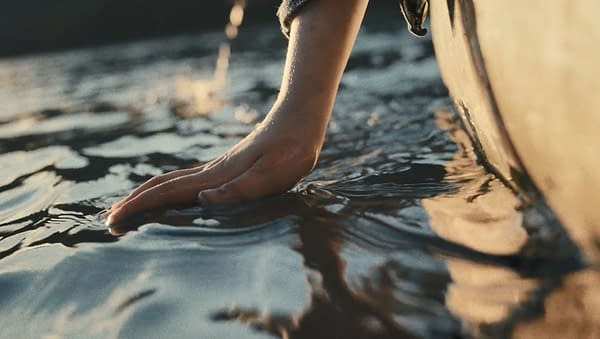
How did Audrey and Stacey get involved? Was it some it was an audition process, or did you have one of them pencil from the get-go?
It was an audition process and a rigorous one. They nailed it, and there were three rounds. It became clear that they were the ones that needed to be the characters. As a director, I struggled to make that choice because I saw many talented people. I was like, "Wow!" Doing short films before is not the easiest. Many people say it's not easy to work with children, but in this case, with this audition process, I found three amazing young women who were phenomenal. My heart was breaking because I didn't want to say no to any of them, but I could only pick one.
Thank goodness for my casting director, Catherine Corcoran, because she was a child actress and a fantastic actress. If you're familiar with her work, she's starred in Troma Films and 'Return to Nuke' Em High,' (2013) but also doing her own stunts, not to mention the first 'Terrifier' (2016) doing one of the most notorious death scenes in horror films in recent memory, where she's upside down the entire time. It's an intense and gory event in the movie. I'm grateful for her guidance. She had a lot of insight into who would help be this character. That shows a filmmaker is only as good as their team and the people they collaborate with. I'm grateful for all my amazing collaborators on the film, including Catherine.
What from your previous experience has helped you the most when directing 'Esme, My Love' since your first project with 'The Best Little Coffeehouse in Maryland?'
'The Best Little Coffeehouse in Maryland' was at one point going to be a feature but ended up being filmed as a short, though we probably had enough material to make a feature. I learned from that, and it's also a documentary, so it's different. It's a different piece. What I learned in the post-production process of making 'Best Little Coffeehouse in Maryland,' and I'm flattered you mentioned that because I'm proud of that film. Suppose you're working with an editor who's not yourself, and you don't necessarily have an established relationship working with them before. In that case, there will be a long getting-to-know-you process, and finding the right editors to work with is as important as any other aspect. The same goes for finding the right actresses, my writing partner, and my cinematographer. You can't fit the square peg into the round hole if it's not the right match. Some, like me, thought they might be the right fit for the film because an editor was good and I liked them. Going through 'The Best Little Coffeehouse in Maryland,' I learned that because I want somebody in there like a great editor, it doesn't necessarily mean they're the right one for this film.
Was there a particular sequence or aspect of the film that stood out to you that was more difficult than others?
For different reasons, from writing and story reasons, the pivotal scene for us in the edit was when we figured out the baptism scene, the hardest to do on set because of problems. There were physical ones like the underwater stuff because the underwater housing on our camera broke [laughs], and we had to figure out Plan B and then Plan C. We then had to figure out, "Oh gosh! We only had a $90,000 shooting budget and 13 days of principal photography." Aside from the potential pick-up day, we also had to worry about our resources. The underwater scene was a once-in-a-lifetime opportunity to be at this specific location. How are we going to do this in different locations? Regarding logistics, redoing or getting the underwater stuff for the first time seemed extremely daunting.
My team again came through my art department, and my cinematographer, Fletcher Wolfe, said, "I know what to do. We're going to go there. This is how we're going to do it. I've done this before because I've done this underwater music video. I happened to have directed myself with some synchronized swimmers. We did some diving and got it covered." Without Fletcher there, I would have been sunk. Without Jacky [Lalo], who was my set decorator, but stepped up to be the production designer for the reshoot days when we had to recreate the barn floor. He had six hours to do it. He was like, "I'll do it." I couldn't do that. Kyra Boselli, my production designer. There was only a two-person art team in my film. Kyra and Jacky were incredible.
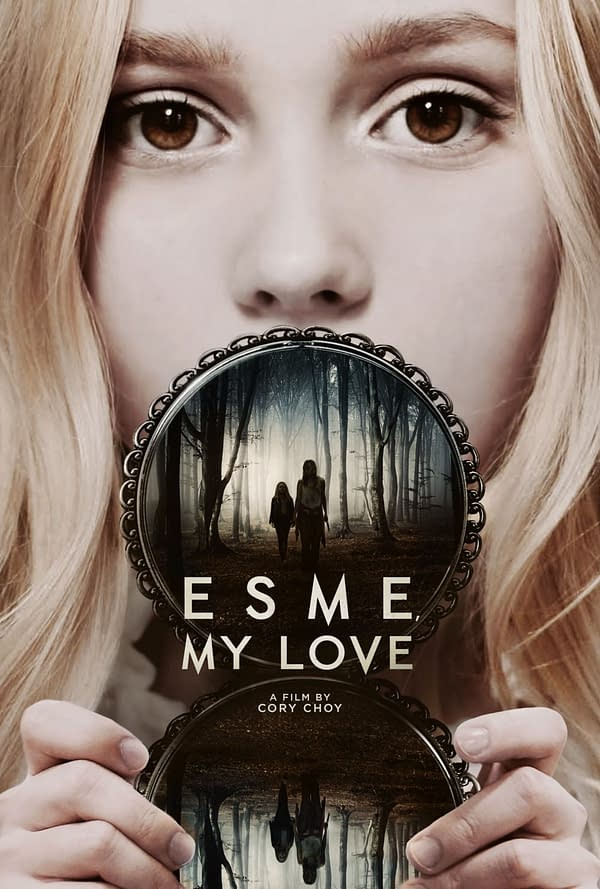
What were your biggest creative influences as a filmmaker?
I took three movies as inspiration in terms of stylistic and narrative points. The first film was 'The Tree of Life' (2011), which I don't actually like as a movie much, which is funny, but I find it beautiful, and the visuals stuck in my head. It's ironic that like a movie I didn't care for that much became one of my main inspirations because I thought it was gorgeous. The Babadook (2014), which I absolutely love as a film, and 'Old Joy' (2006), which is one of Kelly Reichardt's earlier films.
Esme, My Love is available on digital.






